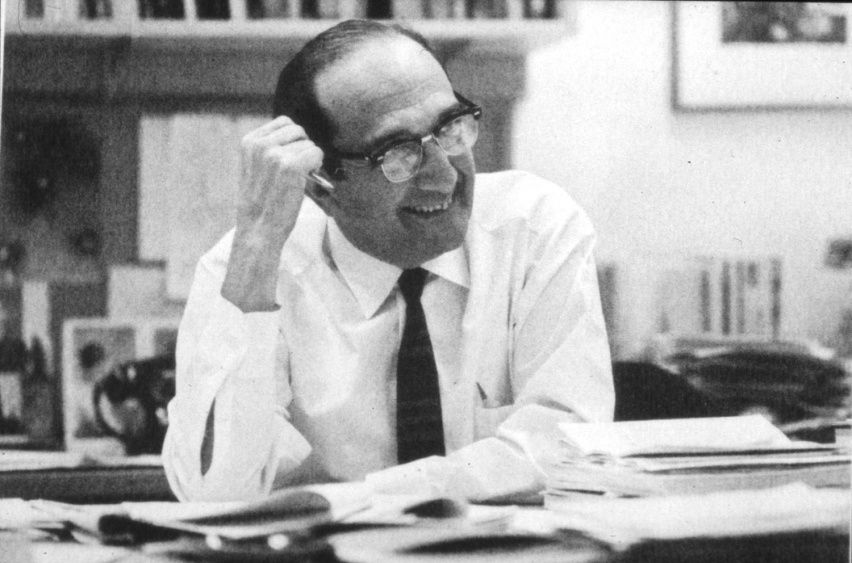
Salvador Luria
MIT Koch Institute
October 20, 2019
Fifty years ago, on the heels of an extraordinary summer—the Cuyahoga River Fire, Stonewall Riots, Apollo 11, Manson and Woodstock—a microbiologist in Cambridge, Massachusetts received one more heady piece news. Originally from Torino, Italy, Salvador E. Luria had joined the faculty of MIT ten years earlier. It was here in the US, where he immigrated in 1940, that he conducted the research that had just won him the Nobel Prize.
Luria, with collaborators Max Delbrück and Alfred Hershey, won the Nobel in Medicine for discoveries about the replication mechanism and genetic structure of viruses called bacteriophages. Luria also showed that bacterial resistance to these viruses is genetically inherited, uncovering mutations that permit them to overcome immunological barriers.The scientists’ work illuminated key unanswered questions in virology and genetics, pioneered biological materials and techniques, and is regarded as being primarily responsible for modern advances in the control of viral diseases and for advances in molecular biology.
By time of his award, however, Luria was looking for new challenges, and shortly after the passage of the National Cancer Act of 1971 he successfully applied for funds to build a cancer research facility at MIT. As founder and first director of the fledgling MIT Center for Cancer Research (CCR), he oversaw the conversion of a former chocolate factory abutting campus into a research laboratory and National Cancer Institute-designated basic cancer research center; he also sought out and recruited scientists with expertise in genetics, immunology, and cell biology. Luria and his founding faculty opened the CCR in 1974, setting in motion an unprecedented era of progress in cancer research. Under his leadership, the Center set the standard for investigating the fundamental nature of cancer. Among their accomplishments, faculty members isolated the first human oncogene, discovered RNA splicing, and made numerous other seminal contributions to cancer biology and genetics. Beyond their importance in understanding the disease, these advances laid the groundwork for new methods to treat and diagnose cancer. At institutions around the world, generations of CCR-trained scientists have shaped the evolution of cancer research in their own labs. Here at MIT, the legacy of Luria and the CCR continues to flourish through the work of the Koch Institute for Integrative Cancer Research, where cancer scientists and engineers collaborate to create the next generation of cancer solutions.
As a tribute to the individual who spearheaded the formation of MIT’s first dedicated cancer research effort the Koch Institute is working, with friends and the MIT administration, to name the Koch Institute’s main meeting space the Salvador E. Luria Auditorium. A hub of daily life in the Koch Institute, the Luria Auditorium will host scientific and community meetings and programs, visiting presenters, K-12 educational workshops, and special and public events. The Luria Auditorium will also include an installation describing the history of the CCR and its many contributions to cancer science.
Contributions to the campaign to name the Salvador E. Luria Auditorium can be made online or by mail to Lisa Marks Schwarz, Managing Director of Development, Koch Institute at MIT, 77 Massachusetts Avenue (76-158), Cambridge, MA 02139. Your support will help to ensure that the pioneering work of Luria and the CCR remain a living legacy within the heart of the Koch Institute.